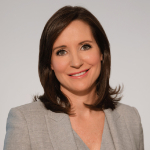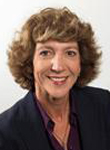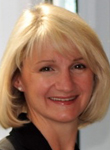Sunday, September 30
Aon Benfield NICC Golf Tournament at Le Grand Vallon Golf Course
(Tournament starts at 11:00am) Golf registration required.
Conference Registration Opens 9:00am
Cocktail Reception, Sponsored by Lloyd’s 6:00-8:00pm
Welcome address by: Graham White, Deputy Chairman, Lloyd’s
Monday, October 01
Breakfast sponsored by Cira Medical Services
7:30am - 8:30am
Welcome, Acknowledgements, and Intro Address
8:30am
Global Economic Outlook
8:45 - 9:30am
This presentation will review the outlook for the global economy, the Canadian economy and the various provincial economies. It will touch on the prospects for interest rates, foreign exchange rates, commodities, and equities. The objective is to present the economic and financial backdrop that insurers will be facing in 2012, 2013 and beyond.
The View from OSFI
9:30am - 10:10am
Superintendent Julie Dickson will give an overview of the current economic environment, and what OSFI is seeing in the most recent property and casualty results. Ms. Dickson will also provide some insight into various regulatory initiatives, and discuss what she feels will be important issues in the coming quarters. She will respond to questions at the end of her presentation.
Networking Break sponsored by Accenture Software
10:10am - 10:40am
Morning Concurrent Sessions
10:40am - 11:50am
Deputy Senior Vice President, Claims, Western Division, Intact Insurance
Catastrophic events are on the rise globally as well as in Canada. In fact, 2011 was a record CAT year globally. The increased frequency and, in particular, the severity of CATs is putting a strain on the global insurance/reinsurance industry. In Canada we need only think about the repeated wind/water events across the country as well as the Slave Lake fire. The US has recently been battered by severe tornadic events and other meteorological events as well as a major oil spill. Meanwhile, elsewhere, earthquakes, floods, typhoons and severe storms have left great swaths of destruction in their wake.
This distinguished panel will explore how insurers and their partners can effectively adjust claims in CAT scenarios while best serving the needs of all stakeholders. The panel will focus primarily on experiences from Slave Lake, North American windstorms and the implications of cascading supply-chain contingent business interruption (CBI) risks that stem from CAT events.
In an effort to take the Ontario Auto insurance product from improved to ideal, this panel will examine what’s dubbed the dream product for Ontario drivers. Insurer and legal interests are represented on this panel that scrutinizes the researcher’s effort to complete the continuum of reform in Canada’s most troubled insurance product.
End of Morning Concurrent Sessions
Lunch and Presentation sponsored by the IBC
12:00pm - 1:45pm
For an industry that plays such a vital role in the daily lives of Canadians we are strangely silent on the national and global issues that affect them. Is our industry poised to lead? Have we earned the right? Who needs our leadership? These and many more questions will be addressed as Don Forgeron, president and CEO of Insurance Bureau of Canada, explores the benefits that accrue to an industry prepared to make its mark on the Canadian and world stages.
Early Afternoon Concurrent Sessions
2:00pm - 3:00pm
The NICC’s global reinsurance panel is always a highly anticipated event. This year’s panel is no different. Moderated by Mike Morrissey, CEO of the IIS, this panel of leaders from the world’s key markets will share their insights into what cedants and reinsurers can expect in the upcoming renewals and beyond.
Eng., Ph.D., Assistant Professor, Department of Computer and Software Engineering, Ecole Polytechnique de Montreal
Risks related to computer systems and information contained on those systems are a relatively new reality of our world. As with all new categories of risk, it is often misunderstood and hard to quantify and evaluate. In this session, we will try to accomplish two important objectives. First, to shed some light on this new class of risk, we will describe the actors behind some of the most prevalent deliberate threats against information systems, their methods and the impacts they have on those whose systems are attacked. In particular, we will uncover some of the root causes behind the continued existence of this problem, including technological, political and economic aspects.
Second, we will discuss and try to understand why covering computer and information system-related risk has not been the growth industry that could have been given the increasing importance of these systems in the wealth of corporations and nations. We will attempt to describe some of the difficulties of evaluating and insuring these risks, and attempt to identify some paths towards solutions that will allow insurers to capitalize on this growing business opportunity, while at the same time becoming part of the global solution to the problem by providing part of the incentive structure necessary for owners, operators and users of these systems to make the right risk management decisions.
End of Early Afternoon Concurrent Sessions
Networking Break sponsored by CI Top Broker
3:00pm - 3:30pm
Late Afternoon Concurrent Sessions
3:30pm - 5:00pm
The traditional design-bid-build model for procuring physical assets is under attack. Several owners that have a significant portion of their capital expenditures focused on procuring and operating physical assets are rethinking the traditional and adopting more long-view procurement models that promote collaboration and transparency. These are owners in the government sector, the energy sector, the mining sector, the power sector and the real estate sector. Find out why owners are making this shift in procurement models, find out how much more successful the assets procured using these models perform, and find out how this procurement model could have a tremendous impact in the overall property and casualty industry loss ratios.
Ask yourself how many of the losses the P&C industry pays out are related to poor design, poor construction, and poor operations of physical assets? If there were a model that utilized a risk allocation whereby the risks were allocated with better “skin in the game” and greater assurance risks were held by the party best able to manage them, wouldn’t your company want to not only find out more about these models, but potentially invest in these models in order to make lower risk physical assets? There is an opportunity for the P&C industry to substantially impact its loss ratios by learning more about the new world of construction procurement and our panel is looking forward to assisting in that education.
CCM, Vice President, Business Solutions, Atmospheric and Environmental Research (AER)
Solar Storms in form of Coronal Mass Ejections (CME) and Solar Flares can cause near earth geomagnetic disturbances at varying levels of severity and frequency. Strong space weather events can affect satellites in space as well as high voltage power lines and transformers on the ground. In 1989, a very strong geomagnetic storm caused a 9 hour power outage over the whole province of Quebec in Canada.
The biggest recorded event was in 1859, a Super Storm known as the Carrington Event. Auroras around the world were seen as far south as the Caribbean. Telegraph systems failed in Europe and North America. If such an event were to happen today, the implications on today’s electrical power grid might be of enormous scale although there is a lot of technical potential available in reducing the risk of such an impact.
The fragility of the North American power grid infrastructure as well as the mind boggling amount of exposure today’s electricity dependent society has compared to exposure in 1859 and even 1989 will be covered in this discussion.
End of Late Afternoon Concurrent Sessions
Cocktail Reception sponsored by Standard and Poor’s (6:30 – 8:00pm)
Dinner and Entertainment (8:00pm)
Dinner Co-Sponsored by Guy Carpenter and PCS-Canada; Wine sponsored by PwC
Entertainment: “Second City Does Insurance” sponsored by Nova Scotia Business Inc.
Tuesday, October 02
Breakfast sponsored by Towers Watson
7:15am - 8:30am
The View from AMF
8:30am - 9:15am
President and CEO of AMF, Mario Albert will present his vision of various issues in the world of P&C insurance. Thus, at the distribution level, the AMF is alert to the latest developments and consults clients on issues such as distribution of products without a representative, access to products and distribution thereof through different modes, including the Internet.
Provincial regulators face a variety of issues. At the Canadian level, the Canadian Council of Insurance Regulators (CCIR) allows the grouping of regulators to consolidate the vision and create the synergy needed to solve pan-Canadian issues such as the implementation of International Association of Insurance Supervisors’ core principles.
Finally, Mr. Albert will discuss various prudential challenges arising from economic conditions that are on the agenda of the regulator. The topics addressed include capitalization challenges for insurers, insurance risks becoming higher and the impact of the period of low interest rates.
Early Morning Concurrent Sessions
9:20am - 10:20am
Insurance-linked securities (ILS) represent a rapidly growing alternative way to manage various insurance risks, especially exposure to natural catastrophes. Since mid-1990s, ILS have been used by primary carriers, reinsurers, governments and corporations to manage catastrophe and other insurance risks by transferring them to the global capital markets through various innovative structures.
In this enlightening session, you will hear from various players in ILS value-chain, including a primary carrier, a reinsurer, a legal expert and an investor. Canada is no stranger to catastrophes, but ILS have hardly taken root here. Is that about to change, particularly in light of the record-breaking global cat losses in 2011? Attend this compelling session to find out why ILS might make sense for the Canadian market.
President & COO, Desjardins General Insurance Group and Senior VP and General Manager, Property and Casualty Insurance, Desjardins Group
The face of insurance marketing is changing. As distribution in personal lines continues to increase in the direct channel, companies are making significant investments in their brands. At the same time, the pace of adoption of mobile internet technology and social media among all generations of consumers is increasing.
What is the place for the personal lines broker in the landscape of the future? Will disintermediation devastate traditional channels? Will high value, multi-channel distribution strategies be effective or will insurance companies be relegated to the realm of low-cost manufacturing by internet search engines? Is public trust important such that there is value in brand and reputation, or is just price king?
Join us as we explore the social, technological, economic, environmental and political forces that have the potential to shape what the future holds for the marketing of insurance products.
End of Early Morning Concurrent Sessions
Networking Break sponsored by Deloitte
10:20am - 10:45am
Late Morning Concurrent Sessions
10:45am - 12:00pm
Join our expert panel for an in-depth exploration of the cargo crime problem plaguing North America and possible solutions for the supply chain and its insurance partners.
Cargo crime costs the Canadian economy billions of dollars a year. The pain is shared by manufacturers, retailers, transportation companies and their insurers. Insecure supply chains pose a public health threat as well as providing fertile ground for organized crime. Law enforcement resources are under-resourced and becoming less specialized. A lasting solution can only come about through cross industry and public-private partnerships.
A Hard Rain’s A-Gonna Fall. So What Can IBC’s New Underwriting Tool Do About It?
Cat losses have been near or above $1 billion for three years running. Water and sewer infrastructure is inadequate for the unprecedented levels of precipitation we’re seeing, and it’s putting more and more stress on insurers and communities. IBC’s Municipal Risk Assessment tool (MRAT) uses three kinds of data – geographic information system (GIS) data, climate history and modeling, and claims history – to measure infrastructure vulnerabilities. The new tool will bring greater precision to underwriting while helping municipalities prioritize their infrastructure repairs. But MRAT is a powerful tool that must be used with caution. Join this expert panel as they discuss the opportunities and risks ahead.
End of Late Morning Concurrent Sessions
Closing Lunch sponsored by CIP
12:30 - 2:25pm
The Wall Street Journal dubbed David Frum one of the leading political commentators of his generation. He is also cited as one of the top 100 public intellectuals in North America. Political speechwriter, author, journalist, and commentator, David Frum is at the top his game.
Frum is an expert on Canada-US relations, and leads discussion on social and political issues of the day. David offers refreshing and clear insights of complicated issues. Don’t miss his NICC closing keynote address, where he will train his sights on the 2012 US elections, the Canadian political scene, as well as a sharp-as-nails analysis of the current state and future outlook for conservatism.
Conference Wrap Up
2:25 - 2:30pm
NICC 2012 Accredited by RIBO
Both days (October 1 & 2, 2012)
8.5 hours in the Management category










































